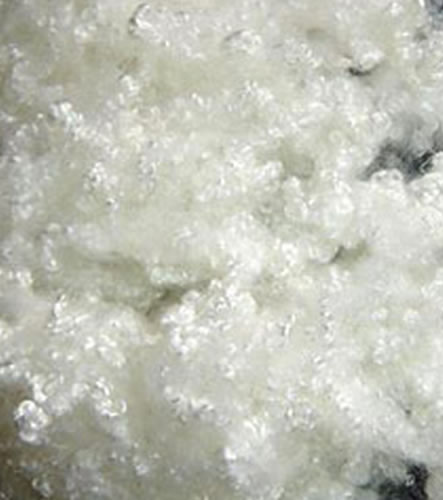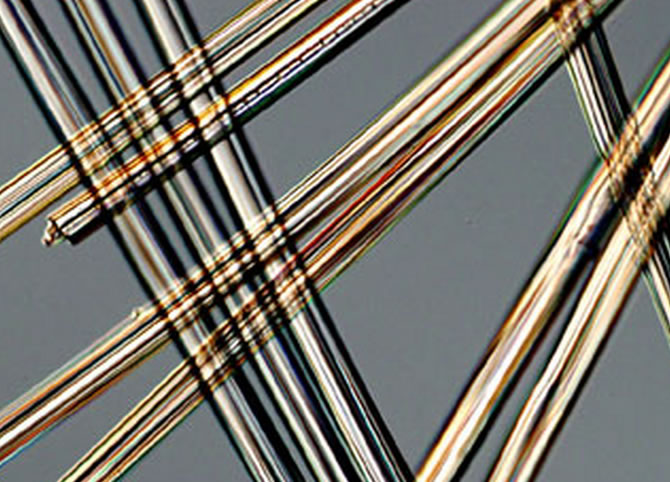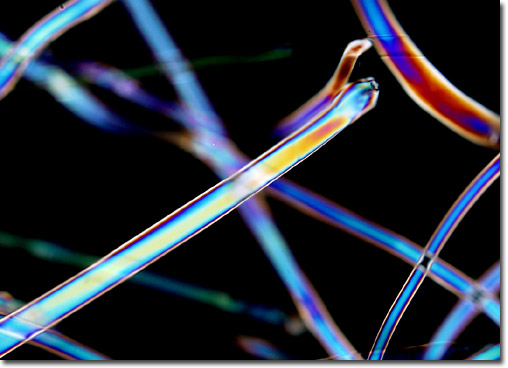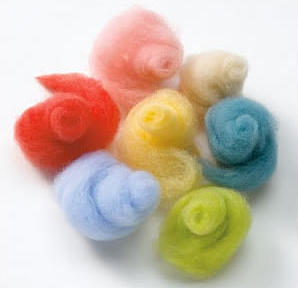Introduction to Fiber Analysis
NCSSMDistanceEd (YouTube)
Hair is the fine threadlike strands growing from the skin of humans, mammals, and some other animals, while fibers are defined as the smallest part of a textile material. Both come under the heading of "trace evidence" in an investigation.
Human hair is one of the most frequently found pieces of evidence at the scene of a violent crime. It can provide a link between the criminal and the act.
From hair you can determine:
- Human or animal
- Race
- Origin
- Manner in which hair was removed
- Treated hair
- Drugs ingested
Hair Evidence
Tim Zietz (YouTube)
Hair is composed of the protein keratin, which is also the primary component of finger nails.

Hair is produced from a structure called the hair follicle. Hair color is mostly the result of pigments, which are chemical compounds that reflect certain wavelengths of visible light. Hair shape (round or oval) and texture (curly or straight) is influenced heavily by genes. The physical appearance of hair can be affected by nutritional status and intentional alteration (heat curling, perms, straightening, etc.). The body area (head, arm, leg, back, etc.) from which a hair originated can be determined by the sample's length, shape, size, color, and other physical characteristics. In order to test hair evidence for nuclear DNA, the root must be present. The hair may also be tested using mitochondrial DNA present in the shaft of the hair whether or not the root is present.

Analyzing Hair Samples
The medulla is the hair core that is not always present. The medulla comes in different types and patterns. Human medulla may be continuous, fragmented or absent.

Medulla
The Medulla Index is used to compare hairs and to determine the type of hair found. The index value is calculated by measuring the diameter of the medulla and dividing it by the diameter of the hair. Human hair has an index value around ⅓ while animal hairs have an index value of around ½.
Microscopic Comparison of Hair and Fiber Evidence
NCSSMDistanceEd (YouTube)
Fibers
Almost all fibers are some form of chemical polymer. Polymers are chemical molecules with repeating units of structure.

Polyethylene
Fibers are separated into two general categories: Natural and Synthetic. And then further classified based on their origin: animal, vegetable or mineral.
Natural Fibers
Cotton is a vegetable fiber. Strong, tough, flexible; moisture absorbent; not shape retentive. When ignited it burns with a steady flame and smells like burning leaves. The ash left is easily crumbled. Small samples of burning cotton can be blown out as you would a candle. 
Linen is also a plant fiber but different from cotton in that the individual plant fibers which make up the yarn are long where cotton fibers are short. Linen takes longer to ignite. The fabric closest to the ash is very brittle. Linen is easily extinguished by blowing on it as you would a candle. 
Silk is a protein fiber and usually burns readily, not necessarily with a steady flame, and smells like burning hair. The ash is easily crumbled. Silk samples are not as easily extinguished as cotton or linen.

Wool is also a protein fiber but is harder to ignite than silk as the individual "hair" fibers are shorter than silk and the weave of the fabrics is generally looser than with silk. The flame is steady but more difficult to keep burning. The smell of burning wool is like burning hair.

Synthetic Fibers
Acetate is made from cellulose (wood fibers), technically cellulose acetate. Acetate burns readily with a flickering flame that cannot be easily extinguished. The burning cellulose drips and leaves a hard ash. The smell is similar to burning wood chips.


Acrylic technically acrylonitrile is made from natural gas and petroleum. Acrylics burn readily due to the fiber content and the lofty, air filled pockets. A match or cigarette dropped on an acrylic blanket can ignite the fabric which will burn rapidly unless extinguished. The ash is hard. The smell is acrid or harsh.


Nylon is a polyamide made from petroleum. Nylon melts and then burns rapidly if the flame remains on the melted fiber. If you can keep the flame on the melting nylon, it smells like burning plastic.



Polyester is a polymer produced from coal, air, water, and petroleum products. Polyester melts and burns at the same time, the melting, burning ash can bond quickly to any surface it drips on including skin. The smoke from polyester is black with a sweetish smell. The extinguished ash is hard.



Rayon is a regenerated cellulose fiber which is almost pure cellulose. Rayon burns rapidly and leaves only a slight ash. The burning smell is close to burning leaves.



Blends consist of two or more fibers and, ideally, are supposed to take on the characteristics of each fiber in the blend. The burning test can be used but the fabric content will be an assumption.
Generally fiber analysis is completed by many of the same methods used to analyze hair. That is to say most of the testing is simply examination using a microscope and comparison. The chart below lists many of the examinations used on fibers. Note how many of the processes are microscopy.

Burn test for fibers
One of the simplest ways to identify fabric fibers that are unknown, is a simple burn test. This test can be done to determine if the fabric is a natural fiber, manmade fiber, or a blend of natural and manmade fibers. The burn test is to crude to be used to determine the exact fiber content. However, it can still determine the difference between many fibers to "narrow" the choices down to natural or manmade fibers. The advantage of this test for forensic purposes is the amount of time it takes to complete it.

